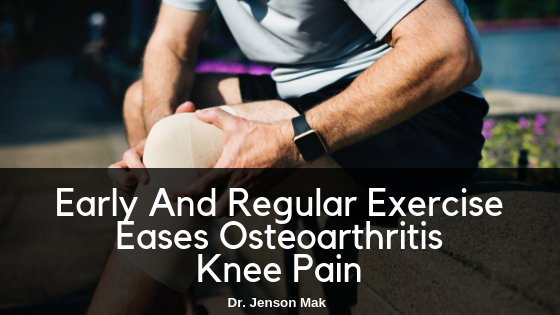The most common type of arthritis, osteoarthritis, affects in excess of 30 million Americans. Harvard Medical School cites these statistics while recommending ways to avoid or alleviate the condition. The institution notes two significant factors that affect patient outcome: appropriate therapeutic exercise routines and weight control. Moreover, these factors interact, making comprehensive treatment the best approach.
Although osteoarthritis occurs most commonly in the knees, it may also attack the neck, lower back, hips, and fingers. The condition deteriorates cartilage between the bone junctions allowing bones to rub together during movement. Moving and flexing begins to cause pain, swelling, and stiffness. Conversely, lack of exercise also causes the diseased joints to swell and become painful.
Staying active with knee osteoarthritis is particularly important because not only does activity keep the joints mobile but also controls body weight. Excess weight compounds stress to osteoarthritic knees, as body mechanics transfer four pounds of pressure per pound of body weight with each step. Additionally, exercise helps strengthen muscle and tissue surrounding the knee joint which provides increased support.
Beginning exercise early in osteoarthritis progression is important because it helps ensure that the knee becomes as strong as possible and that body fat decreases. Because it is a degenerative disease, waiting longer to begin therapeutic exercise decreases its effectiveness as more damage will already have occurred.
Although proper diet and exercise help manage knee osteoarthritis, the cartilage may wear away to a debilitating degree. As the condition reaches this stage, the sufferer may require a regimen of low-impact workouts. An excellent source is water therapy. Buoyancy reduces the weight impact factor while resistance increases effectiveness, keeping muscles and connective tissue healthy. Exercises performed while seated in a chair, such as leg extensions, offer low-impact strength and flexibility training. Aerobic exercise involving primarily upper-body movements helps maintain cardiovascular health as well as weight. Resistance, stretching, and balance workouts, yoga or tai chi, for example, help maintain a healthy body when mobility becomes an issue. Finally, ambulatory aids such as canes and knee braces also offer solutions to remaining active with advanced knee osteoarthritis.
Establishing a medically-approved, simple routine based on the severity of the osteoarthritis damage is key to avoiding debilitating pain and stiffness. Although joint damage is inevitable, strength, flexibility, and cardiovascular health remain obtainable.

